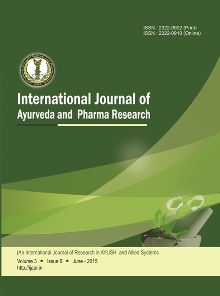Human Gut Microbiome in Health and Disease-An Ayurvedic Perspective
Abstract
The human gut microbiome refers to the complex collection of trillions of microorganisms residing in the gastrointestinal tract, which play a crucial role in homeostasis and disease. Over the past few years, our understanding of the microbiome has evolved significantly, highlighting its impact on a wide range of physiological and pathological processes. This emerging knowledge has transformed health sciences, revealing the gut microbiome’s essential role in maintaining metabolic, immune and neurological health. In this context, Ayurveda, a traditional system of medicine originating in India, has long emphasized the importance of gut health. Ayurveda’s integrative approach of dietary guidelines, lifestyle modifications, treatments, and practices aimed at restoring balance within the body. The "Agni" (digestive fire) in Ayurvedic terms, is considered a central element of health. Ayurveda teaches that proper digestion is essential not only for physical well-being but also for mental clarity and emotional stability. Ayurveda offers supportive view into modern microbiome science by focusing on the balance of bodily humours (Doshas) and recommending specific herbs, probiotics, and prebiotics that can support gut health. In-depth analysis of Ayurvedic concepts and practices in line with the theory of microbiome proves that they are aimed at maintaining a balanced gut flora. As microbiome research continues to evolve, Ayurveda's emphasis on individualized care, nurturing the gut microbiome and enhancing overall health.
Copyright (c) 2025 International Journal of Ayurveda and Pharma Research

This work is licensed under a Creative Commons Attribution-NonCommercial-ShareAlike 4.0 International License.


